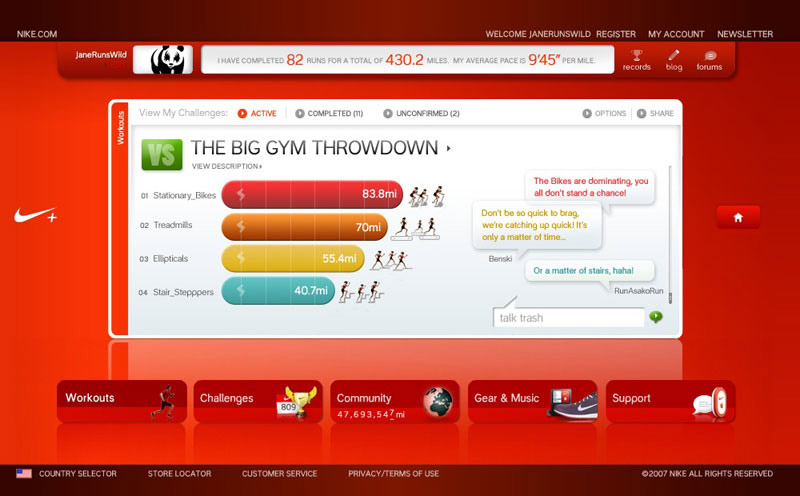Interactive Bikes Make Exercise More Enjoyable
Sunday, February 28th, 2010 Exercise bikes integrated with video games have been growing in popularity. They offer a great platform for cognitive designers looking to shift the exercise experience. Found a recent article, Predicting the Effects of Interactive Video Bikes on Exercise Adherence that suggests they may help us exercise more consistently by making it enjoyable.
Exercise bikes integrated with video games have been growing in popularity. They offer a great platform for cognitive designers looking to shift the exercise experience. Found a recent article, Predicting the Effects of Interactive Video Bikes on Exercise Adherence that suggests they may help us exercise more consistently by making it enjoyable.
You have to pay to access the article but the research blog has a good summary post. The research was done using GameBikes an interactive video bike created by a small firm in Texas.
“The bottom-line: the men who trained on the GameBikes were more likely to stick to the exercise regime. They attended an average of 77 per cent of the sessions compared with 42 per cent of participants in the low-tech control condition. “
That 33% difference was attributed to the experience on the GameBike being more pleasant, enjoyable and exciting. In cognitive design terms that means that exercising with the GameBike produces more mental energy (positive affective and emotions) than just cycling on a stationary bike.











